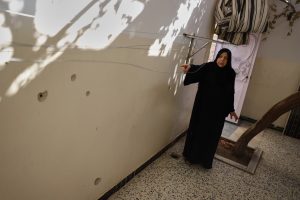Zuckerberg’s Hawaii hideaway raises concerns over burial site

Mark Zuckerberg’s sprawling estate on the Hawaiian island of Kauai is once again drawing scrutiny. This time, it’s over claims that part of the property is being built on top of an ancestral burial site.
The Meta CEO began buying land on Kauai in 2014, starting with a 707-acre purchase for roughly $116 million. The acquisition was seen as controversial from the start. Critics warned that large-scale development could disrupt daily life on an island so small it had only one traffic light until 1973. Kauai’s close-knit population — a mix of Native Hawaiians and descendants of Asian and Puerto Rican plantation workers — objected to the presence of a tech billionaire transforming their island. A 2020 petition on Change.org called on Zuckerberg to stop “colonizing” Kauai.
Since then, his compound — known as Ko’olau Ranch — has more than doubled to over 1,400 acres. In a 2023 investigation, Wired reported that the site includes two mansions connected by tunnels, a 5,000-square-foot underground bunker equipped with a concrete-filled metal door, an escape hatch and plans for food and energy self-sufficiency.
In a July 21, 2025, follow-up piece, Wired has revealed that part of the compound sits atop Native Hawaiian burial plots, something the Zuckerberg estate was reportedly made aware of as early as 2015.
According to Wired, Julian Ako, a descendant of two people buried on the site, was recently granted access to the area after months of discussions with the Zuckerbergs. He located the graves of his great-grandmother and her brother, though the remains of other ancestors were not found. Based on oral histories, state officials say there is a high probability of additional burial sites nearby.
Ako, who serves on the Oahu Island Burial Council, is concerned that any future discoveries may be kept hidden, due to the extreme secrecy around the project. Nearly everyone working on Ko’olau Ranch is bound by nondisclosure agreements (NDAs), and the 2023 Wired report revealed several workers were fired for posting about the site on social media.
In Native Hawaiian culture, burial sites are considered sacred, and building over them is seen as desecration. Early Hawaiians often buried the dead in caves or remote areas to keep them undisturbed and the living are expected to protect these remains. Hawaii state law requires burial sites to be treated with “dignity and freedom from unnecessary disturbance.”
Still, some locals see potential benefits. Zuckerberg’s neighbor, Matt Goodale, told The Guardian that Zuckerberg’s purchase was preferable to large-scale residential development and that “he is trying to do the right thing.” Zuckerberg has also made contributions to local schools and housing, suggesting some effort to integrate into the community and ease concerns about his growing presence.
Not Zuckerberg’s first controversy on the island
In 2016, Zuckerberg filed a series of “quiet title” lawsuits to force Native Hawaiian families, many with inherited “kuleana” land rights passed down informally, to sell their shares, often through public auctions. Under pressure, Zuckerberg eventually dropped the lawsuits.
Still, his footprint has continued to grow. By 2021, he had added another 560 acres of ranchland. In 2023, he faced fresh backlash after announcing plans to raise cattle on the property, fed exclusively on macadamia nuts and beer, an idea mocked by both left- and right-leaning news outlets as elitist and out of touch.
The Guardian reported in 2017 that critics of Zuckerberg’s land lawsuits described him as “the face of neocolonialism.” Kapua Sproat, a law professor at the University of Hawaii, told the paper: “For us, as Native Hawaiians, the land is an ancestor… You just don’t sell your grandmother.”
With his compound now confirmed to include sacred ground, critics said the project highlights a broader conflict between wealth and indigenous rights.
A high-tech hideaway draws mixed reviews
Zuckerberg’s estate compares to the Hulu show Paradise, where the ultra-wealthy retreat to a massive, secretive, self-sustaining cave as the world collapses outside. In the show, the compound is built to survive any crisis and is completely isolated from everyday life. Ko’olau Ranch — with its private energy systems, food production and underground bunker — mirrors that idea. Critics say it’s not just about privacy or luxury, but about building an escape hatch, no matter who or what stands in the way.
Author Douglas Rushkoff, who explores this theme in his 2023 book “Survival of the Richest,” argued that tech billionaires like Zuckerberg are preparing not just for comfort but survival.
“These guys are preparing for a digital future where they get to escape the consequences of the world they helped create,” he wrote.





